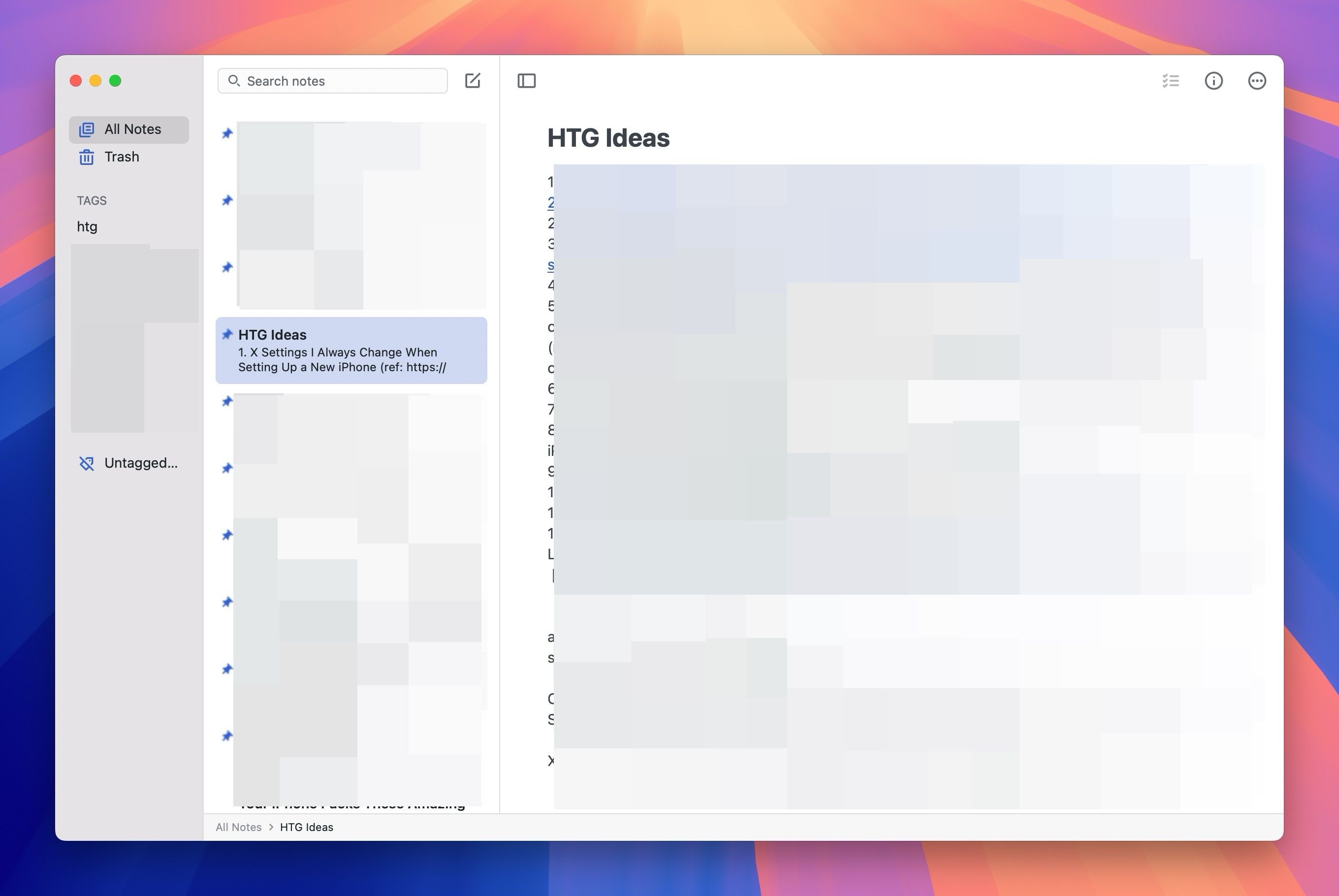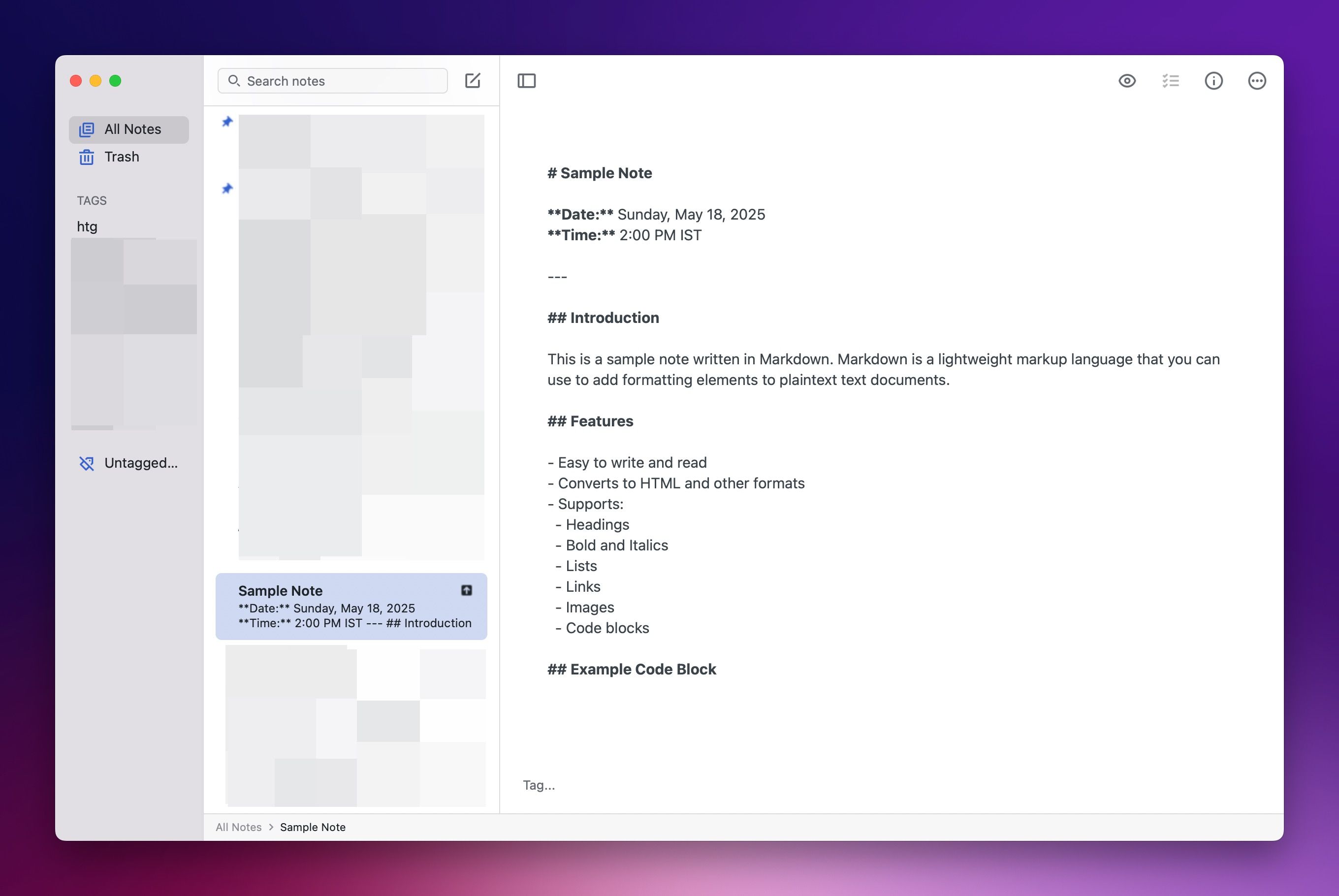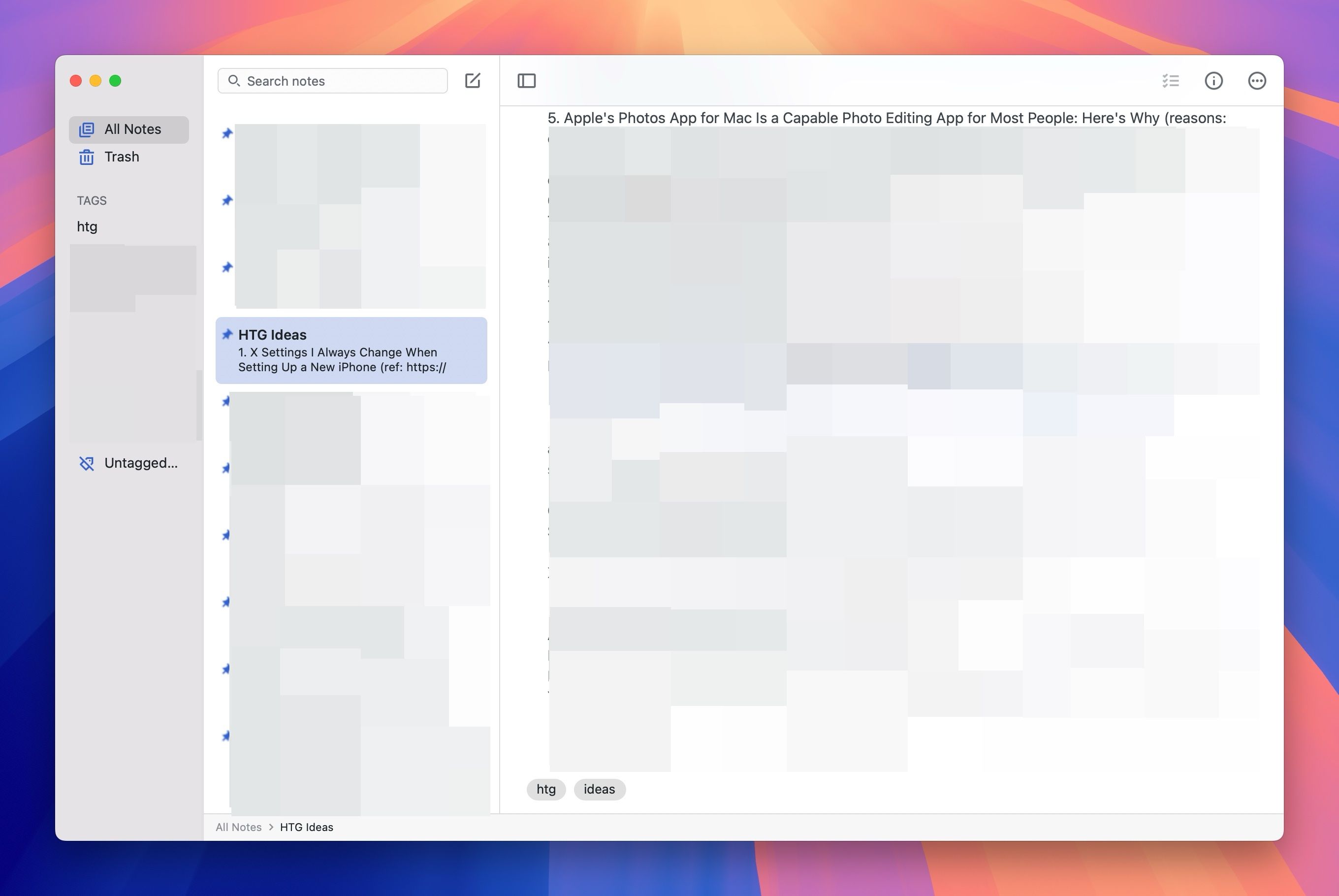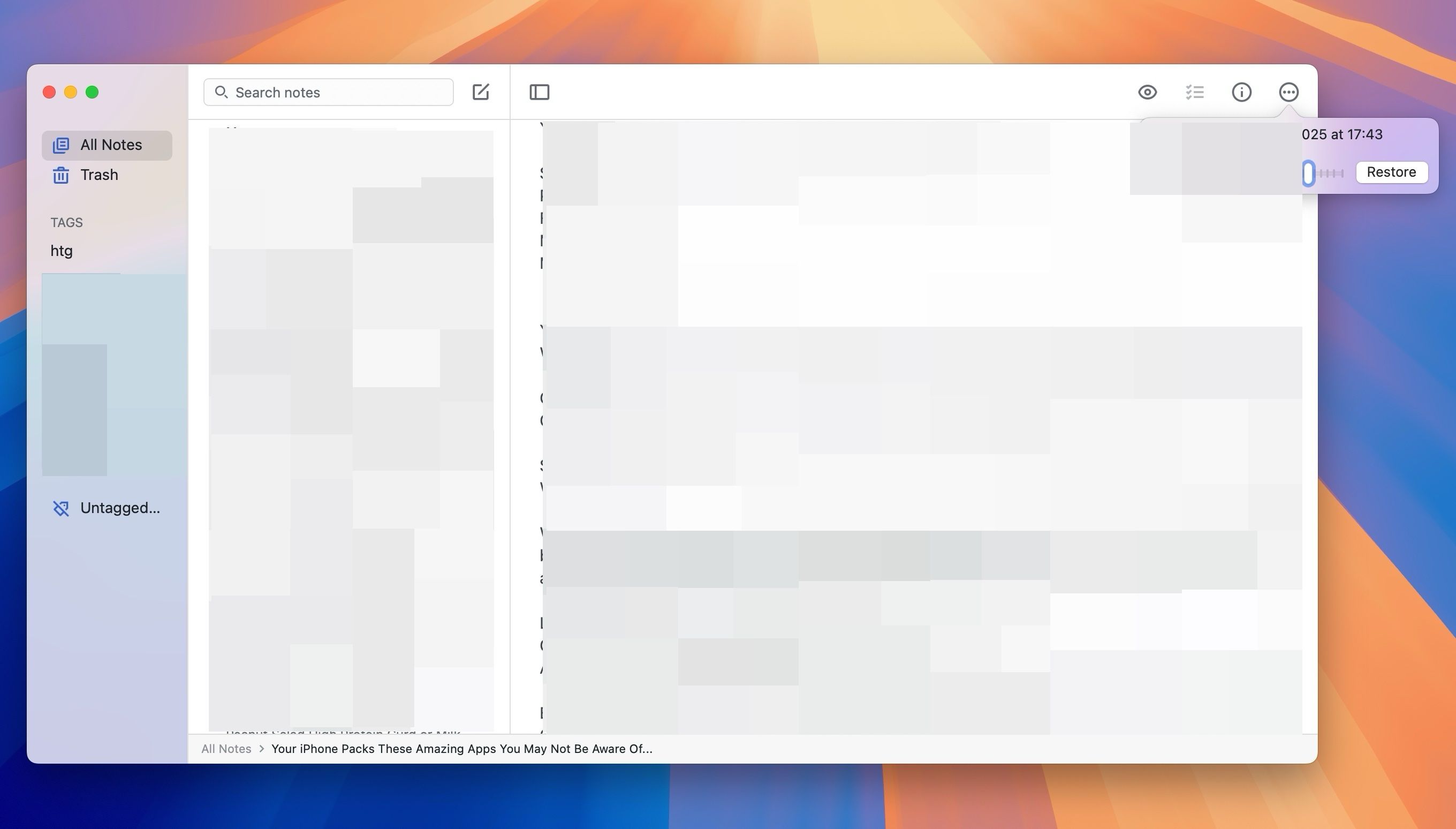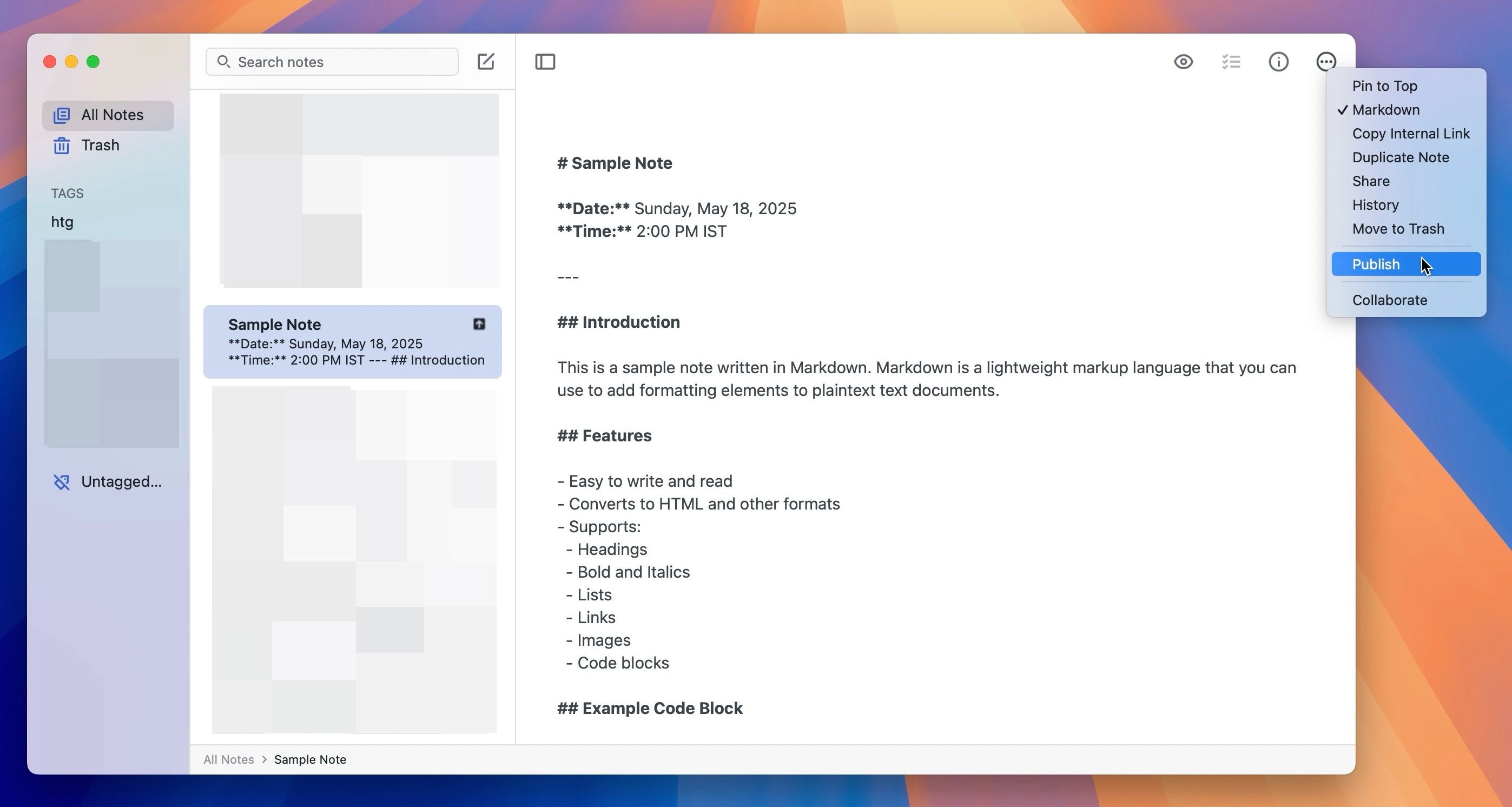I use two note-taking apps: one for capturing fleeting notes and the other for storing important and structured notes I may need later.
I have the latter sorted, but for the former, I needed an app that lets me quickly jot down notes without bogging me down with its complicated interface. I’ve tried using Apple Notes for many years. However, I ultimately switched to Simplenote last year. Here’s why.
1
Simplicity and Speed
One of my favorite things about Simplenote is how quick and easy it is to use. Unlike Apple Notes, it has a much cleaner interface that simplifies navigation and makes finding notes easy. This is, in part, because Simplenote displays notes in a straightforward list rather than putting them into folders like Apple Notes.
Similarly, while Apple Notes offers a slew of formatting options, including support for multimedia attachments, Simplenote focuses purely on text. Its distraction-free editor is devoid of a toolbar (full of formatting options) hanging from the top, which makes it ideal for quick note-taking.
Sure, this approach may not be ideal for everyone—especially the lack of multimedia support—but that’s what I appreciate about it, since I only use Simplenote for quickly jotting down notes, and having a complicated interface (with complex options) in front of me is the last thing I want to see when I’m doing that.
2
Markdown Support
Simplenote may not have as many formatting options as Apple Notes, but it has a standout feature—Markdown support—that its counterpart and many other note-taking apps lack. For the uninitiated, Markdown is a markup language that lets you format plain text using symbols and characters, enabling you to structure your content properly. Thanks to it, I can easily add formatting to my notes in Simplenote.
The best part? Markdown is an optional feature, meaning you can enable or disable it on a per-note basis. This means I can stick to plain note-taking for regular notes and switch on the Markdown feature for ones that need to be formatted a certain way.
Enabling Markdown for a note is easy. Open the note, tap or click the More button (with the three-dot icon) and select “Markdown.” You can then start writing and styling your note. When you want to preview it, tap or click the eye icon at the top.
3
Tag-Based Organization
When it comes to organizing notes, both Apple Notes and Simplenote take different approaches to cater to the needs of different people. While the former uses hierarchical organization using folders and subfolders, the latter keeps all your notes in a list.
Sure, the ability to organize notes into folders and subfolders in Apple Notes is handy, but for my use case—quickly jotting down notes and accessing them—it’s overkill. Meanwhile, Simplenote relies solely on the tag-based organization approach, allowing for easy note organization and discovery.
Adding a tag to a note in Simplenote is easy. Just tap or click the “Add Tag” field and start typing the tag text. You can add multiple tags to a single note if needed. All your tags appear in the sidebar as soon as you create them. Tap on a tag to view all the related notes.
4
Version History
Another nifty feature Simplenote offers that’s missing in Apple Notes is version history. As the name implies, this feature stores a record of all the changes you’ve made to a note since its creation. You can then easily view these changes and restore the note to a previous version whenever needed.
To access a note’s version history, open it, tap or click the More button in the top-right corner, and select “History.” Now, use the slider to go back and forth in the timeline. With the version you want to restore selected, tap or click the “Restore Note” or “Restore” button.
Simplenote will sync your restored changes across all your devices, so you don’t need to do it on each device individually. Keep in mind that you need to be connected to the internet to access a note’s version history and restore the changes.
5
No Storage Limits
Apple stores all your notes in iCloud to make them accessible across all your Apple devices. In contrast, your notes on Simplenote live on Simplenote’s servers.
While neither has an upper limit on the number of notes you can create, you may not be able to create new notes in Apple Notes after some time. This is because the 5GB free iCloud storage Apple offers is shared across all iCloud services, and you’re likely to exhaust it very quickly if you back up a lot of data or notes. Whatever the case, the only way forward then is to upgrade to a higher-storage iCloud plan.
This isn’t an issue with Simplenote. You can create as many notes as you want and never need to worry about running out of storage. Ever since I stopped using Apple Notes, I now have ample free storage within iCloud, which I use to back up WhatsApp messages and other essential documents without worrying about exhausting it and having to upgrade to a paid plan.
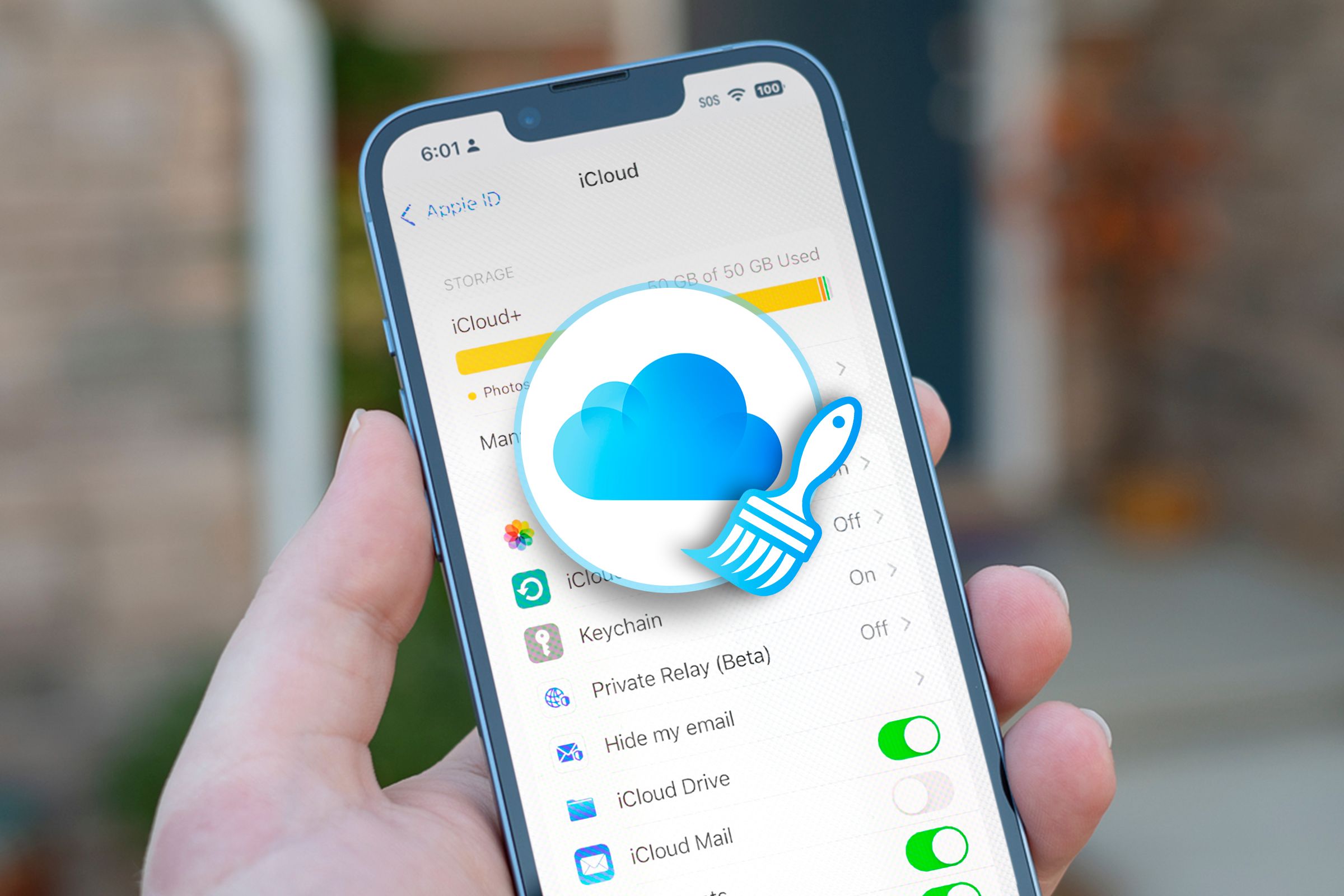
Related
How to Free Up iCloud Storage Space
Apple gives 5GB of free iCloud space to everyone, but it doesn’t last very long.
6
Ability to Publish Notes Online
I often need to share notes with friends and family. On most apps, including Apple Notes, there’s no easy way to do this. However, Simplenote is different. With it, you get the “Publish to Web” feature, which lets you turn a note into a publicly accessible web page with just a few simple taps or clicks.
Publishing a note in Simplenote is easy. On your iPhone, tap the More button and check off “Publish.” Then, tap the More button again and select “Copy Link.” If you’re on a Mac, click the More button and hit “Publish.” Copy the link you see in the pop-up menu. Repeat the same steps to unpublish the note.
Once published, the note lives on Simplenote’s server with a unique link. You can share this link with anyone who can then open it in a web browser to view the note. If you make any changes to the note later, it’s updated automatically on the live version.
Simplenote preserves the formatting of notes when they’re published, so your notes look exactly how you formatted them. Similarly, all the text in the published notes is selectable and searchable, making it easy for the viewer to find what they want and copy it. That said, the viewer can’t edit the published notes.
7
Cross-Platform Support
Apple Notes is ecosystem-centric, so it’s only available on Apple devices (and the web at iCloud.com). This is a huge drawback for someone like me, who uses an Android phone alongside an iPhone and a Windows PC alongside a Mac, as this means I need to use another notes app on non-Apple devices to take notes and move notes between apps frequently to have them accessible across all devices.
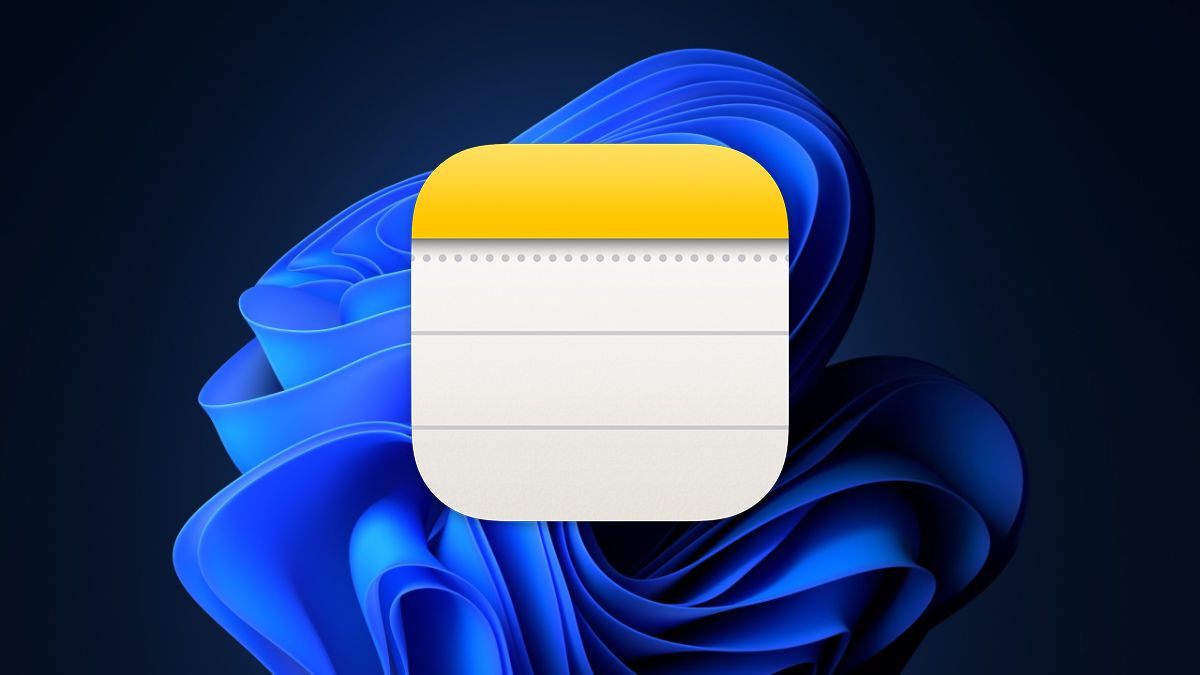
Related
How to Use Apple Notes on Windows or Android
Do you use an iPhone or Mac but also need access to Apple Notes from Android or Windows? iCloud has you covered.
Simplenote, on the other hand, is a cross-platform app available on all major mobile and PC platforms. Plus, you can even access it on the web using a browser. As such, all your notes are up-to-date and accessible across all your devices. This means you can pick up where you left off on, say, your iPhone and continue working on a note on your Android phone or Windows PC.
I’ve tried many note-taking apps. However, Simplenote is by far the best when it comes to fast and hassle-free note-taking. The sleek interface, combined with essential features and cross-platform support, ensures the app can handle my everyday note-taking needs without a hitch.
That said, Simplenote isn’t perfect and misses out on a few features. The lack of support for attachment is a significant one and a highly requested feature among the community. I would love for the developers to add this feature to Simplenote, as that would make the app even more versatile.


